The Australian dollar was stronger last night as the global stock surge carries on. The trigger is a distinct easing in the bond back-up as virus concerns, a still dovish Fed and flamed out oil combine to suppress inflation concerns.
DXY was weak and EUR strong:
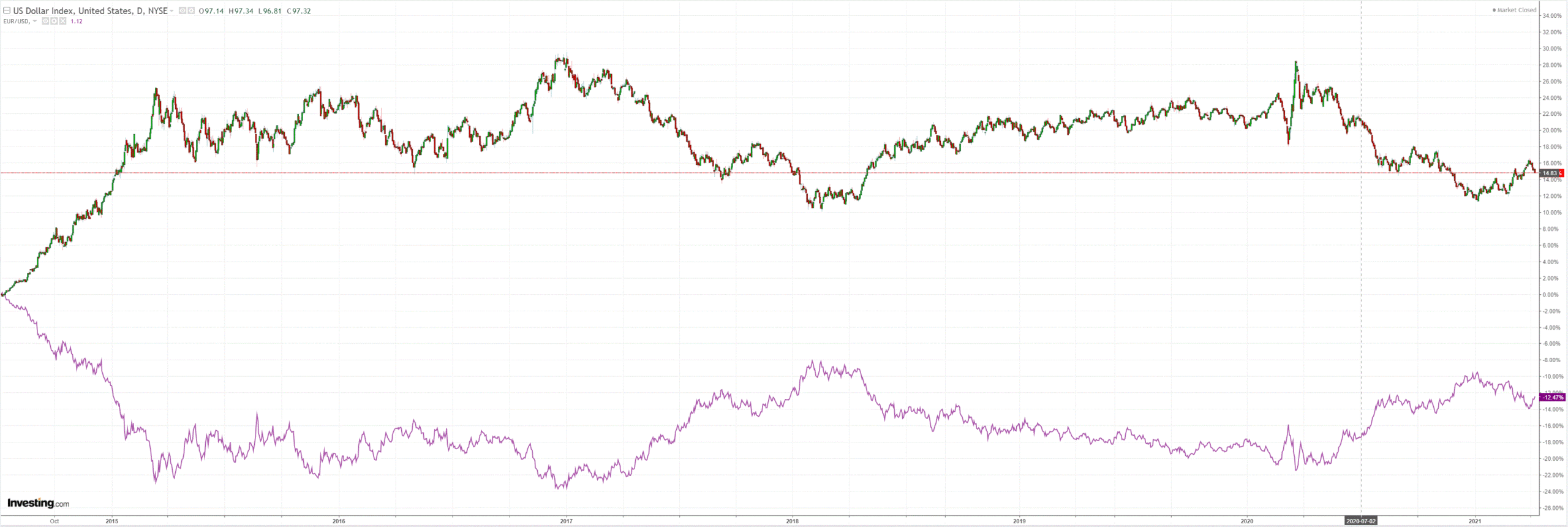
Despite the rally, the Australian dollar is still stuck at the neckline of its head-and-shoulders topping pattern. It is weakening against other DMs. In short, it is clearly underperforming the risk rally as vaccine and recovery problems multiply:
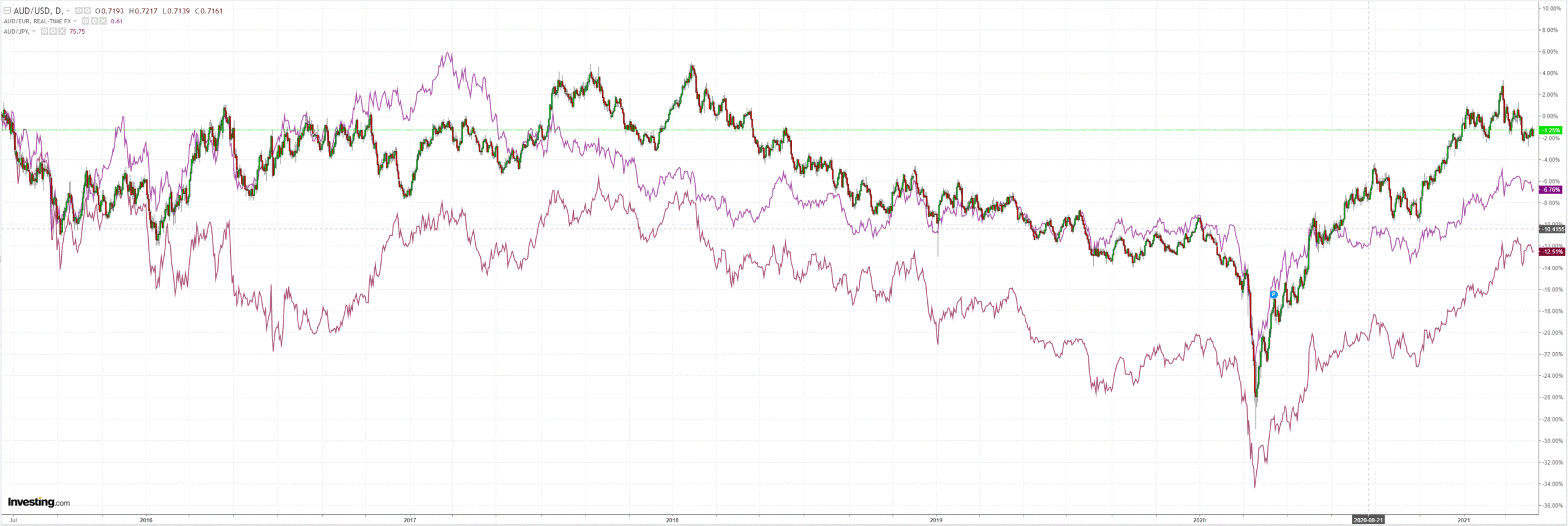
Gold is off the leash for a counter-trend rally and oil remains soft:
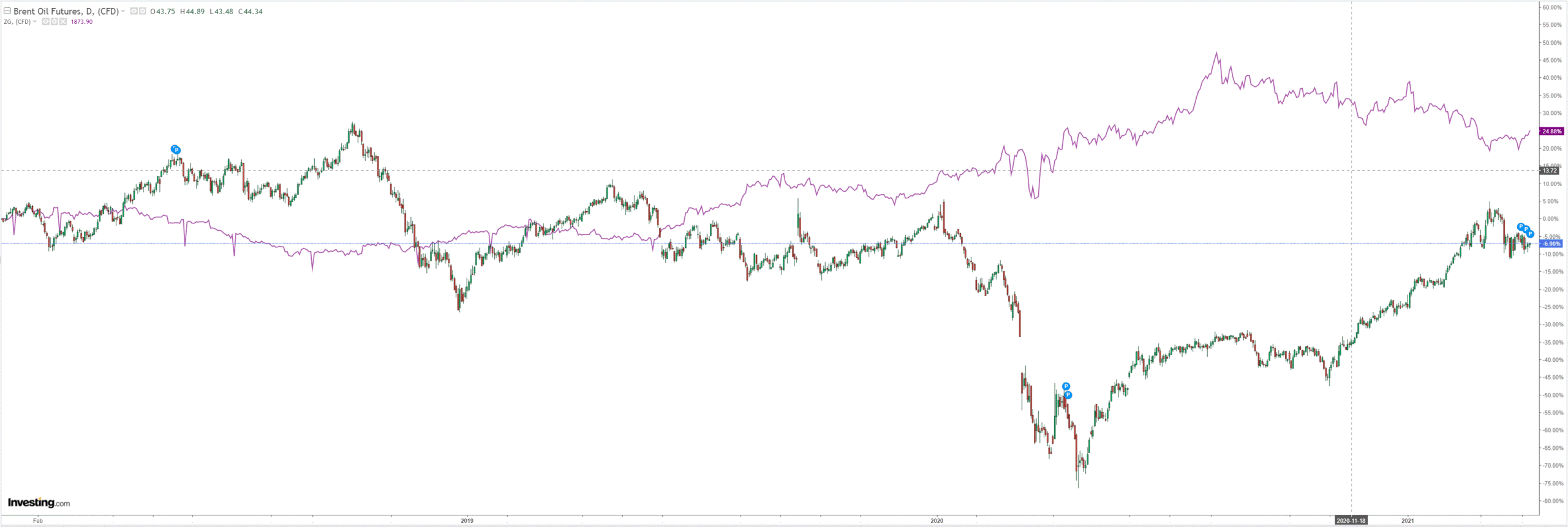
Base metals lifted:
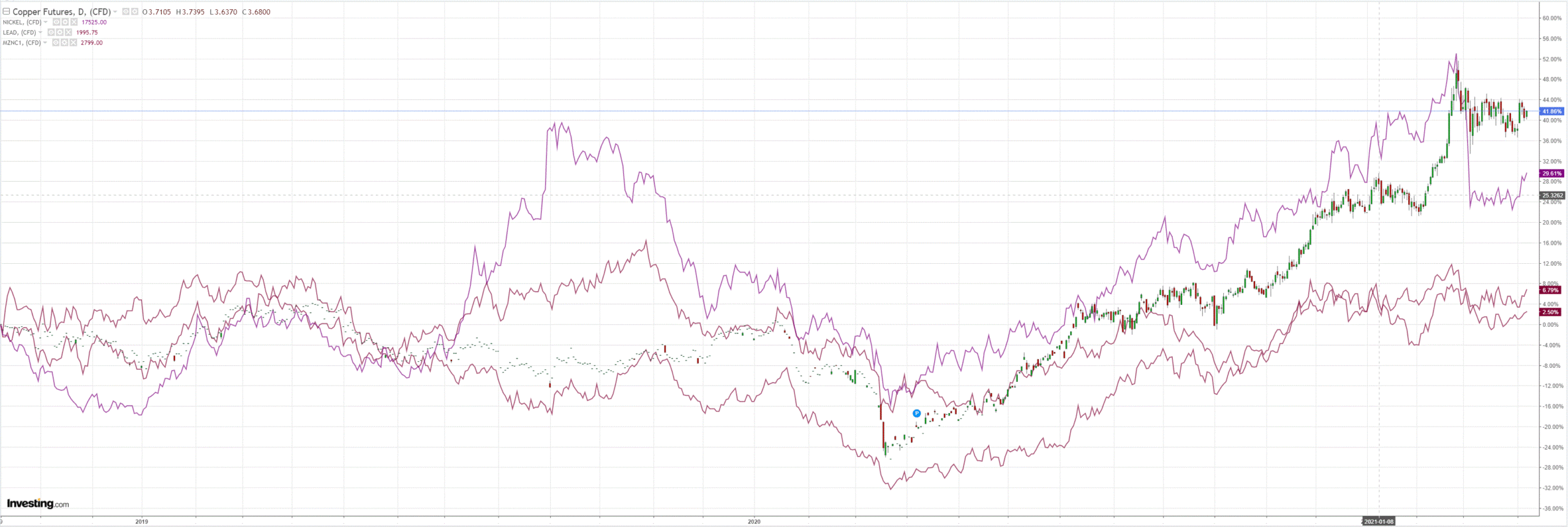
Big miners too. Australians underperforming:
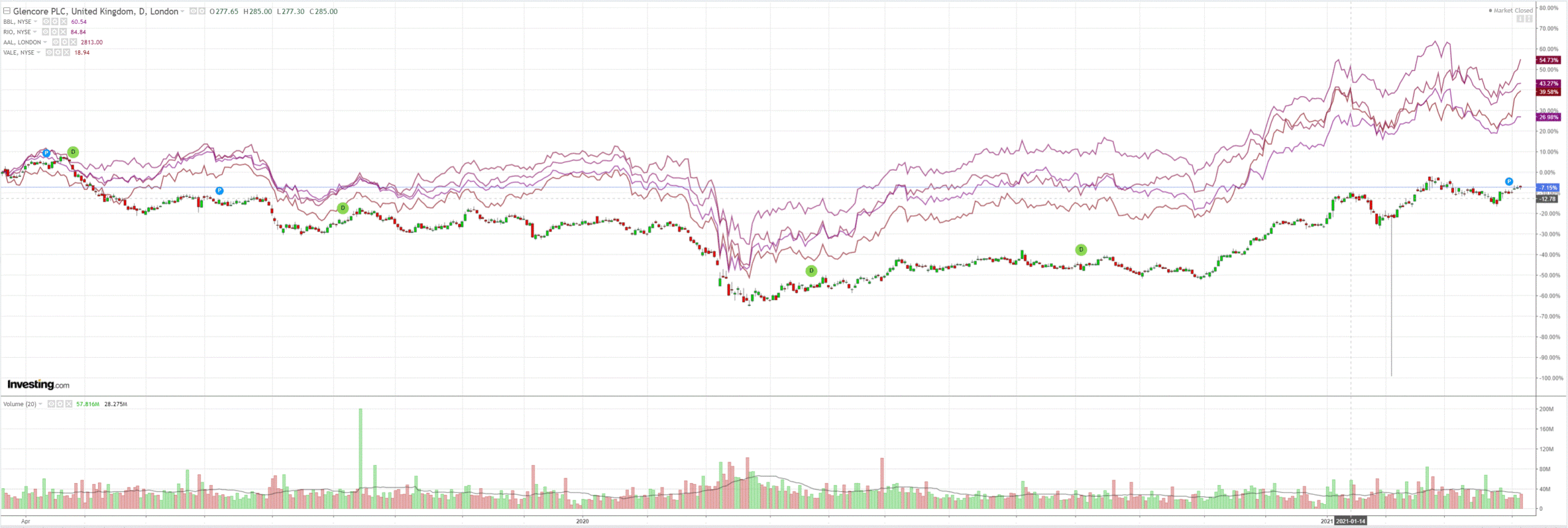
EM stocks still look perilous:
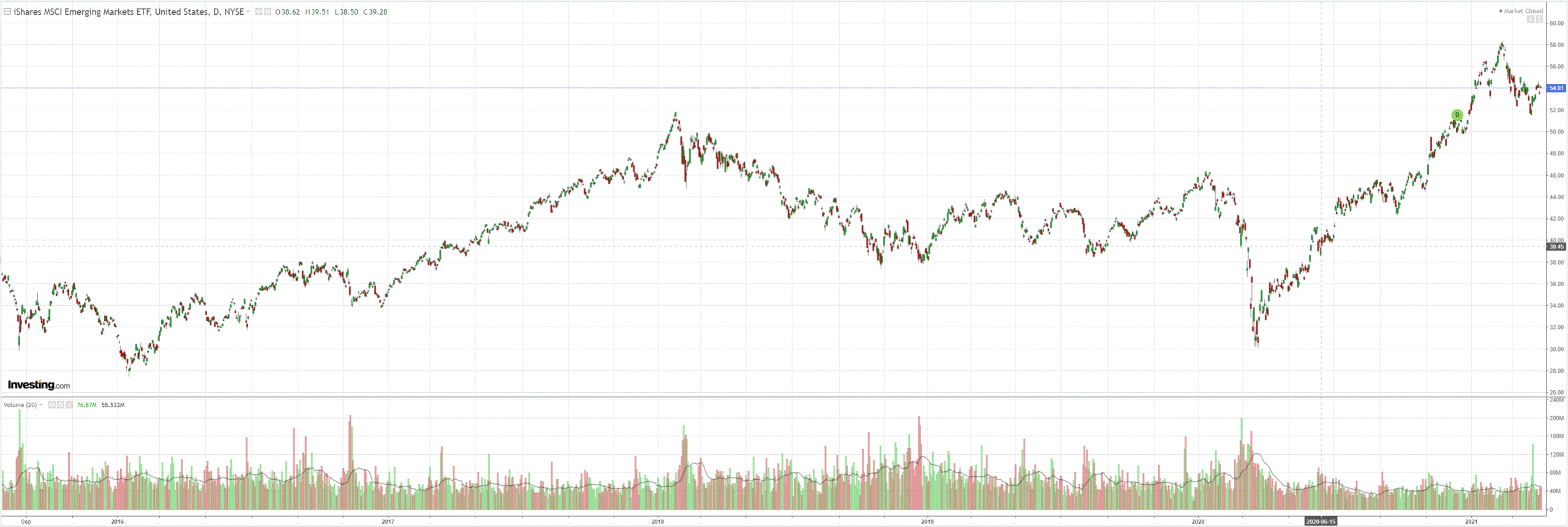
Junk is fine:
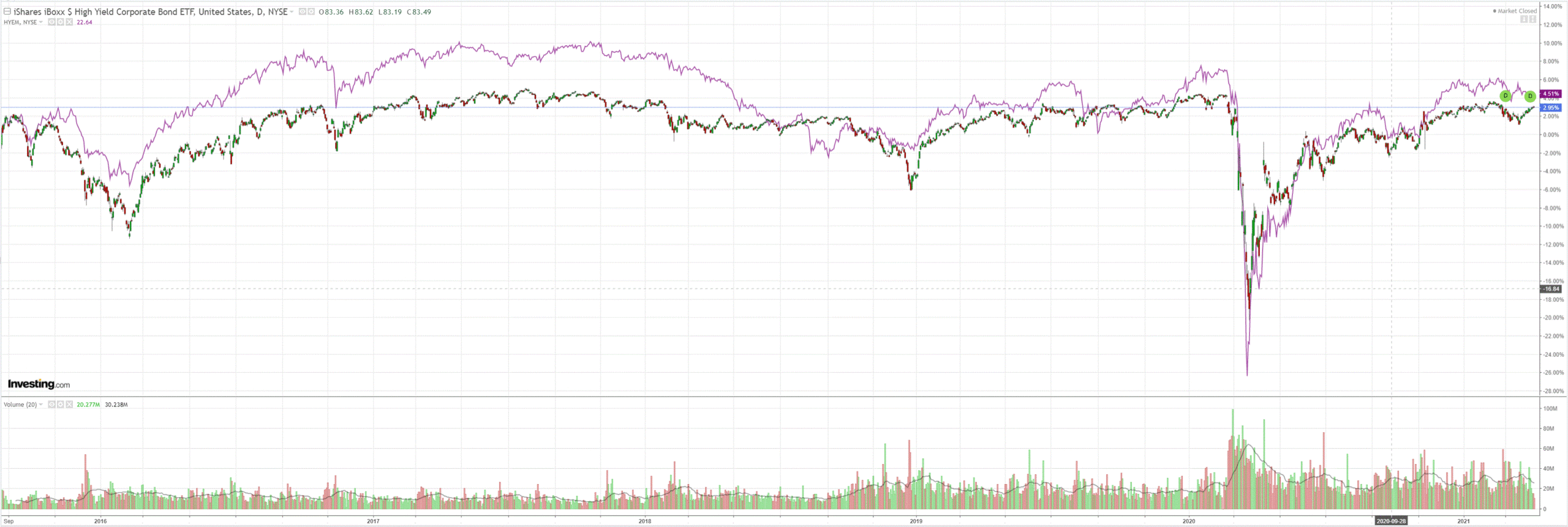
US yields are pulling back:
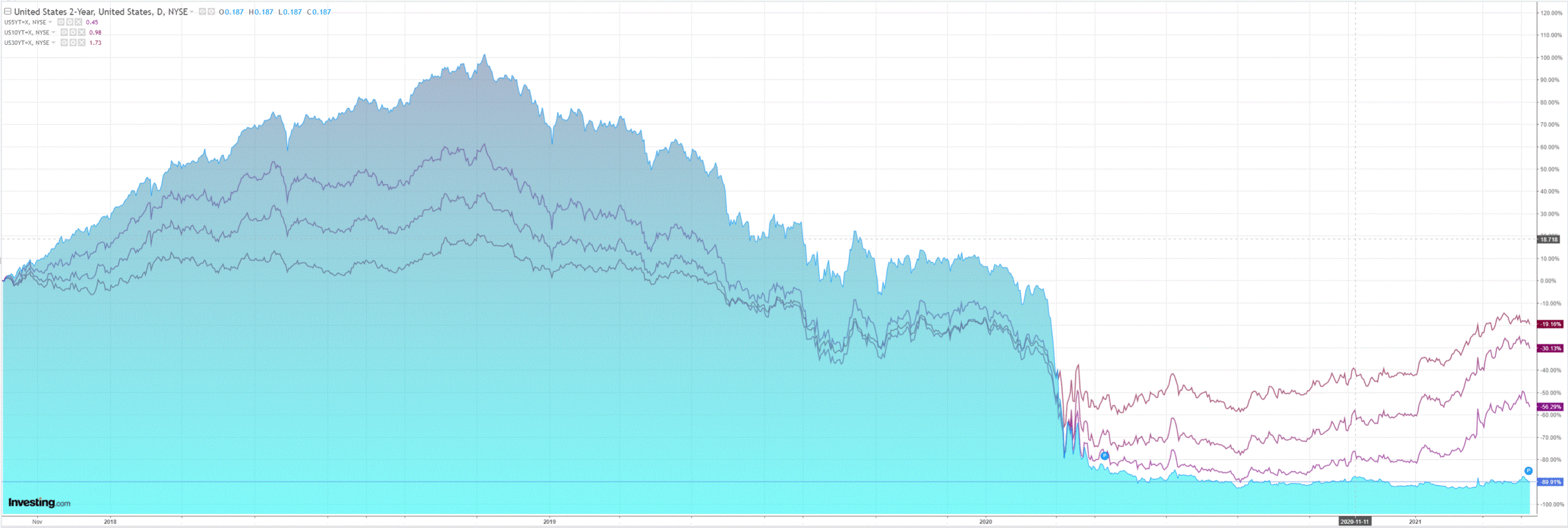
Which has blasted tech and wider stocks higher. An everything rally:
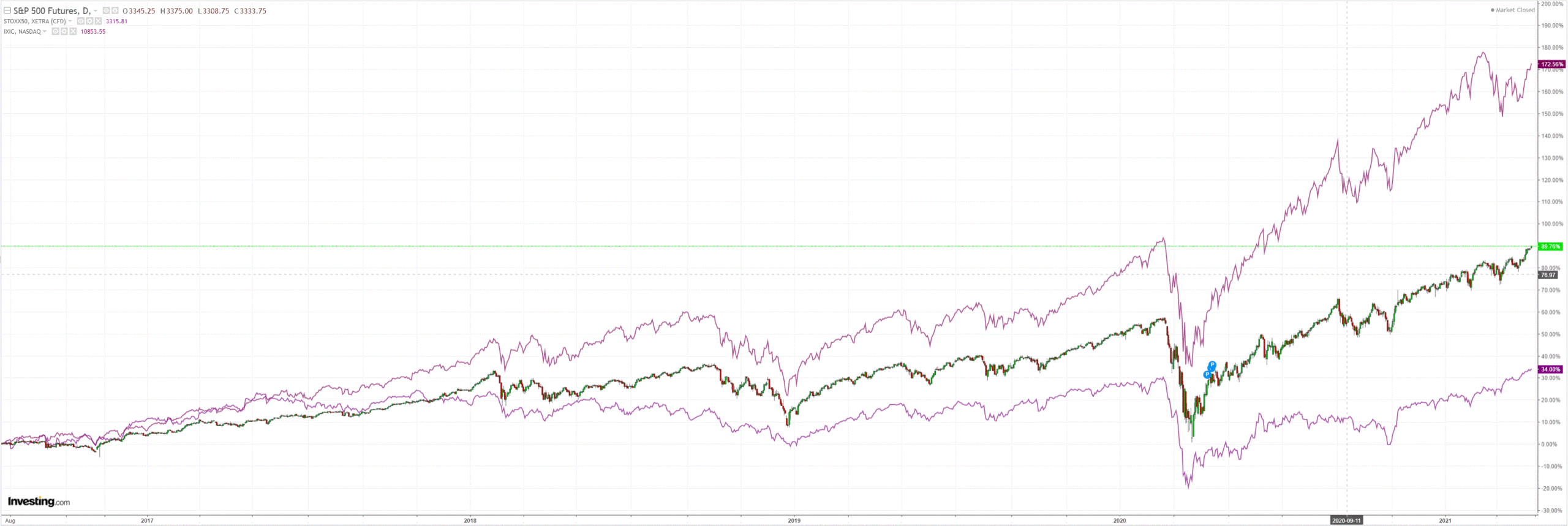
Westpac has the data:
Event Wrap
Fed Chair Powell said the March jobs report was an indication of an improved outlook, but again warned that the recovery is incomplete. The labour market still has substantial spare capacity, and vaccine rollouts are uneven. On the looming inflation spike, expected to be temporary, he said that the Fed would to any sustained rise via rate hikes if necessary.
FOMC member Bullard said he is wary of tapering prematurely. Fed support needs to continue until there is greater clarity on the economy.
US weekly initial jobless claims rose from 728k to 744k (vs 680k expected). Continuing claims fell from 3750k to 3734k (vs 3638k expected). Overall, claims remain elevated due to job churn amid both labour shortages and unused capacity
Event Outlook
New Zealand: RBNZ Chief Economist Ha will speak virtually on the economic and policy outlook in New Zealand to an event at 9:30am NZT.
Australia: The March AiG PSI has recently been on an uptrend, as services expand on the reopening. The RBA will publish the half-yearly update of the Financial Stability Review.
China: The March PPI (market f/c: 3.6%yr) and CPI (market f/c: 0.3%yr) are both expected to lift higher on base effects. March new loans should be strong given the optimism over the outlook (market f/c: CNY 2300bn). Meanwhile, March M2 money supply will remain elevated (market f/c: 9.5%yr).
US: The March PPI is due; upstream price pressures will build but remain modest.
I still see this as a counter-trend rally. There is stronger economic and inflation data still ahead for the US. Credit Suisse agrees:
Although Q1 felt like a strong one for the USD, the BBDXY only rose by 2% over the quarter. Compared to a 9% decline in H2 2020, this is an unimpressive outcome given the sharp rise in longer-term US Treasury yields seen in the quarter and the strong upgrades made to US growth expectations relative to the rest of the world.
Below the surface lies a more complex picture. Funding currencies like the EUR (-5%vsUSD) and JPY (-7.5%) struggled, while other large counterparts like CAD (+1.3%) and GBP (+0.8%) with good vaccination or pro-cyclical stories did well. Similarly, emerging markets with a high global growth beta and lack of clear vulnerabilities (INR,ZAR,RUB) performed while the policy-fragile (BRL,TRY,COP) struggled.
We suspect market confidence that the Fed will fight hard to quash US rate hike expectations up to end-2023, irrespective of the strength of US data, is behind the tepid rise in the greenback so far. If this is challenged more aggressively in Q2 by data outcomes, the USD can post generalized gains from still-low levels.
We look for more USD strength in Q2 against the funders, targeting EURUSD 1.15, USDJPY 112.50 and USDCHF0.9650. But we see scope for pro-cyclical relation currencies to also outperform the funders for yet another quarter as long as growth drives further US rates rises – not Fed- spooking, risk-off-fanning US inflation levels.
We expect EURUSD to remain in a mild downtrend while there is an asymmetry to further rate differential widening: our expected Q2 range is 1.14–1.21 and we like to sell rallies towards 1.20. For USDJPY, our expected range is 107–114 and we are buyers on dips to the lower end.
We still see scope for key pro-cyclical EUR crosses to move lower, targeting EURGBP0.8400 and EURNOK9.80. Slow vaccine rollout and increased policy resistance to market pressure instead leaves us neutral on AUD and onNZD, vs the USD. We lower our USDCAD target from 1.2550 to 1.2260 and look to sell rallies to 1.2700.
That’s a pretty fair assessment. Beyond Q2 there is a growth scare coming in the US as fiscal stimulus winds down year on year and China begins to slow. But it ought to be temporary too as we wait for a new round of Biden stimulus to kick in into 2022.
I will continue to take the opportunity of Australian dollar rallies to shift more assets offshore to get set for more US growth exceptionalism and the Chinese fade in 2022.

